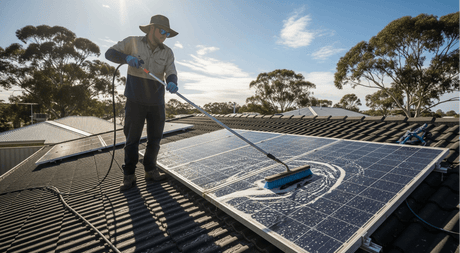Traditional solar panels have bulky structures that are mounted on rooftops. Nowadays, flexible solar panels have become a leading source for providing versatile and clean energy. Bendable nature and easy installation of flexible panels help homeowners, boaters, campers, and travelers benefit from solar energy in areas where rigid solar panels can't reach.
Whether you want to run home appliances, charge devices, create an off-grid setup, or power your RV, flexible panels offer a practical and innovative solution. In this article, we will walk you through everything associated with flexible solar panels, such as types, pros, cons, cost, installation guide, and maintenance tips. By the end, you will be able to decide whether or not you should invest in flexible panels.
What Are Flexible Solar Panels?
Generally, you see rigid solar panels on large-scale PV installations or home rooftops. Flexible panels are different from the traditional, rigid panels. Though all solar panels operate on the photovoltaic effect, flexible panels are more versatile in terms of construction and installation. You can find flexible panels in different sizes and shapes.
Unlike rigid solar panels in which solar cells are encased in metal and glass, flexible panels come with solar cells encased in the flexible structure. Flexible panels are more popular among people living off-grid and outdoor activity lovers.
Flexible solar panels offer a range of applications in different domains, including but not limited to vehicle roofs, boats, electric watercraft, motorhomes, hiking, tents, and the list continues. It is recommended to install flexible panels with portable panels, a power kit, and portable power stations to fulfill your off-grid power requirements.
Flexible panels come with basic components that make installations easier. For example, if you buy the Renogy 12V 200W Flexible Solar Panel, you will get a monocrystalline panel with 12 AWG output cables, a junction box, and IP67 connectors.
How Do Flexible Panels Work?
The working principle of flexible and rigid solar panels is similar. However, flexible panels are made with 300 times thinner solar cells than those used in rigid panels, making them more flexible and lightweight. Flexible panels absorb sunlight using monocrystalline or polycrystalline silicon cells to produce electric power.
Sunlight transmits electromagnetic radiation directly to the solar cells of flexible panels. The internal electric field converts the absorbed energy into electricity. This electricity can be used to run appliances directly during the daytime and can be stored in portable power stations or solar batteries for later use.
How Are Flexible Solar Panels Different from Rigid Solar Panels?
When it comes to installing solar panels, many people find it difficult to decide whether to install rigid or flexible panels. Though both solar panels generate clean energy, they are different from each other. Let's look at some common differences between flexible solar panels and traditional panels.
1. Design
Rigid panels are made with tempered glass and a solid aluminum frame, making them bulkier and heavier. In contrast, flexible panels are bendable, lightweight, and thin. They are made with thin film solar cells or layers of plastic. Flexible panels can easily conform to curved surfaces like tents, RV roofs, and boats.
2. Weight
Rigid panels come with a bulkier structure and are an ideal choice for permanent installations, e.g., rooftops. On the other hand, the weight of a flexible solar panel is just a fraction of that of a traditional panel. Flexible nature makes these panels a great choice for off-grid adventures, camping, and potable setups.
3. Lifespan
Generally, traditional, rigid solar panels last longer than flexible ones due to their weather-resistance capability and strong build. They come with a lifespan of up to 25 years. In contrast, flexible panels are more sensitive to reduced efficiency over time, scratches, and wear and tear. Therefore, they have a relatively shorter lifespan, 5-10 years.
4. Efficiency
When it comes to converting sunlight into electricity, traditional solar panels are more efficient. Whereas flexible panels generate slightly less electricity per square foot compared to their rigid alternatives. If you are more concerned about solar panel efficiency and need a permanent installation, go with rigid panels.
5. Cost
Rigid solar panels are costlier due to their higher efficiency and durability, allowing them to offer better long-term value. On the other hand, flexible panels are cost-effective for portable or small-scale setups. You can choose any of the mentioned options, considering your preferences and interests.
6. Applications
The common applications of rigid solar panels include permanent off-grid solar setups, commercial solar farms, residential rooftops, and more. Whereas, flexible solar panels are more suitable for temporary curved surfaces, emergency backup, RVs, camping, or boats. Keep your requirements in mind when choosing the right solar panel.

Types of Flexible Solar Panels
Flexible panels are categorized into different types, such as thin-film, monocrystalline, and polycrystalline. Let's look at them one by one.
1. Thin-Film Flexible Panels
One (or more) thin layers of photovoltaic material are deposited onto a flexible substrate to make thin-film flexible panels. Their bendable nature makes them easy to install on curved surfaces. At the same time, thin-film panels are 10-12% less efficient compared to crystalline panels. They are best for lightweight applications, tents, and portable chargers.
2. Monocrystalline Flexible Panels
High-grade silicone cells are sliced into thin wafers and are embedded in a flexible material to make monocrystalline solar panels. They are best known for good performance in low light, compact design, and 15-20% higher efficiency. At the same time, monocrystalline panels are costlier than thin-film flexible panels. Monocrystalline panels are commonly used in boats, off-grid setups, and RVs.
3. Polycrystalline Flexible Panels
Multiple silicon crystals are melted together and embedded in a flexible, bendable layer to manufacture polycrystalline panels. The best part? Polycrystalline panels offer moderate efficiency at an affordable cost. At the same time, they are not widely accessible in a flexible form. If you are a budget-conscious individual looking for a good balance between performance and cost, look no further than polycrystalline flexible panels.
4 Reasons to Switch to Flexible Solar Panels Today
The versatility of flexible panels makes them highly popular among outdoor enthusiasts, as mentioned earlier. Below are the common advantages of flexible panels you should know.
1. Bendable
You can easily bend flexible solar panels up to 258°. Such flexibility makes these panels ideal for almost all curved surfaces, making them more suitable for irregularly-shaped surfaces. Rigid solar panels do not possess this property.
2. Lightweight
The lightweight structure of flexible panels is ideal for applications where weight can be a major concern, making them a good choice for boats, motorhomes, and other similar applications. For example, if the fuel efficiency of your motorhome is low, you will want to increase it significantly to save money. This is where flexible panels lend you a helping hand, as they meet your electricity demands without adding much weight to your motorhome.
3. Affordable
Smaller solar installations that are often designed for recreational purposes need budget-friendly power solutions. Flexible panels are more affordable compared to traditional solar panels. Therefore, they are an excellent choice for small installations.
4. Easy to Install
Since flexible solar panels are moldable and lightweight, they are very easy to install on all curved or irregular surfaces. Plus, they do not need heavy-duty mounting brackets during installation. Moreover, drilling is not required when installing flexible panels. Instead, you can install them on your own using VHB tape or industrial adhesives.
The Downsides of Flexible Solar Panels You Should Know
Though flexible panels offer a range of benefits, it is equally important to consider their limitations, as given below.
1. Shorter Lifespan
Rigid solar panels can last 25-30 years or even more if maintained properly. In contrast, flexible panels are built to last for 15-20 years. A shorter lifespan can be a leading disadvantage for many solar panel buyers worldwide.
2. Low Efficiency
Some companies produce flexible panels with ratings similar to rigid solar panels. Overall, rigid panels generate electricity more efficiently than their flexible counterparts.
3. Poor Installation May Lead to Unavoidable Issues
When it comes to installation, flexible panels are easier and straightforward to install. If the flexible panels are not properly installed, they may be blown off in a storm. Moreover, if these panels are not fastened securely to the surface, they can be susceptible to high winds due to their lightweight structure. If you are unsure of whether you can properly install flexible panels, hire a professional technician for this job.
Flexible Solar Panel Uses | Power Anywhere, Anytime
Common practical applications of flexible panels are as follows.
- Home: Flexible panels can easily be installed on curved surfaces like chimneys and vents. They are also ideal for outdoor saunas, detached garages, and storage sheds.
- RVs: With flexible panels, you can easily run lights and appliances in your RV using solar power. You can also recharge the batteries during the daytime and use power when the sun does not shine.
- Hiking/Camping: If your mobile phone, laptop, digital camera, or other similar appliances are running out of charge during a long hike, a flexible solar panel can provide enough power to charge them all.
- Boating: Flexible panels not only generate electricity to power your boat's lights, navigation system, trolling motor, and other appliances, but they also keep your boat batteries charged for a smooth and uninterrupted traveling experience on the water.
What to Look for When Buying the Right Flexible Solar Panel for Your Needs?
You should consider a couple of factors when choosing a flexible solar panel to meet your power needs, as given below.
- Wattage: The higher wattage of a solar panel means that it can generate more electricity. Remember, solar panels don't generate 100% of their rated power; therefore, assuming 75% efficiency is good. It means that a 400W panel can generate a maximum of 300W during the daytime.
- Size: Measure the surface where you want to install flexible panels before you make a purchase. Once you know the exact size, you can order or buy the correct flexible panels.
- Flexibility: It varies from one manufacturer to another. Don't forget to measure the surface to determine how much bend you need during the installation process.
- Durability: Flexible solar panels are usually designed to last for 15-20 years and withstand dirt, dust, high winds, rain, and snow. Still, you should consider buying a product with an official warranty.
- Efficiency: Always check the efficiency of the panel you want to buy. It will greatly impact your return on investment.
How to Install Flexible Solar Panels the Right Way?
While installing flexible panels, following the three steps below will help you do the job properly.
Step 1: Plan Ahead
Before you start the installation, you should be familiar with the mount you want to use. Plus, you must know where exactly you will install panels and what tools are required to do this job. Moreover, you should know whether you have to lay down material to create an air gap or install spacers.
Step 2: Mount Solar Panels
You can use the mounting holes on the corners to screw the flexible panels to the surface. You can also use industrial adhesives or 3M VHB tape along the edges. If you want to create an air gap, you can simply screw down the brackets to the surface.
Step 3: Connect the Panels to the Solar Installation
Once you mount all the panels securely, connect them to the rest of the installation. If you have installed new panels, connect them to the existing solar panels. If you did not add any new panels to the setup, connect the existing panels to the power kit, BOS, or portable power station.
The Cost of Buying Flexible Solar Panels
The installation cost depends on various factors, such as the type of flexible solar panel, wattage, and how you want to install them. Generally, a 150-200W flexible panel can cost you around $200, whereas the cost of a multi-panel 350W solar setup is around $1,000.
If you want to install these panels on your own, there will be an additional cost of the tools required and materials needed, but you don't have to pay for labor. If you want to buy reliable panels at a reasonable price, visit the incredible flexible panel collection at Renogy.
How to Maintain Your Flexible Solar Panels Effectively?
Flexible panels offer easier installation and need very little maintenance. Below is a list of some maintenance tips you should be familiar with.
- Inspect Frequently: Regular inspection is a key to ensuring that all the connections are secure and the panels are free from dust, leaves, and other materials.
- Clean Regularly: Use soap and fresh water to clean your panels' surface Doing this will maximize the power production and increase the lifespan of panels.
- Check Efficiency: Use the online app, monitoring displays, or a multimeter to check if the panels are functioning correctly.
Final Thoughts
The ability of flexible solar panels to adopt curved surfaces makes them an ideal choice for off-grid living, camping, boats, and RVs. They have opened the doors for new possibilities in the world of clean, renewable energy. Though flexible panels can't beat the efficiency of rigid solar panels, they are more versatile and affordable.
If you prefer space-saving energy solutions and portable power, investing in flexible panels will be worth it. The current market offers different types of flexible panels, including thin-film, monocrystalline, and polycrystalline. They are known for affordability, efficiency, and maintaining a balance between performance and price, respectively. Picking the right choice totally depends on your requirements.
FAQs
Are flexible solar panels waterproof?
Yes, most flexible solar panels are waterproof and designed for outdoor use. They're ideal for RVs, boats, and camping gear, offering durability against rain and moisture. Always check product specs for water resistance ratings.
Can I walk on flexible panels?
Yes, Some flexible solar panels are built to withstand light foot traffic, especially marine-grade models. However, not all are designed for weight-bearing. Always follow the manufacturer's guidelines to avoid damaging the cells.
Can flexible solar panels work in cloudy weather?
Yes, flexible solar panels still generate power on cloudy days, though at reduced efficiency. They rely on ambient light, so output drops compared to sunny conditions. They're still useful for maintaining battery charge in low-light environments.

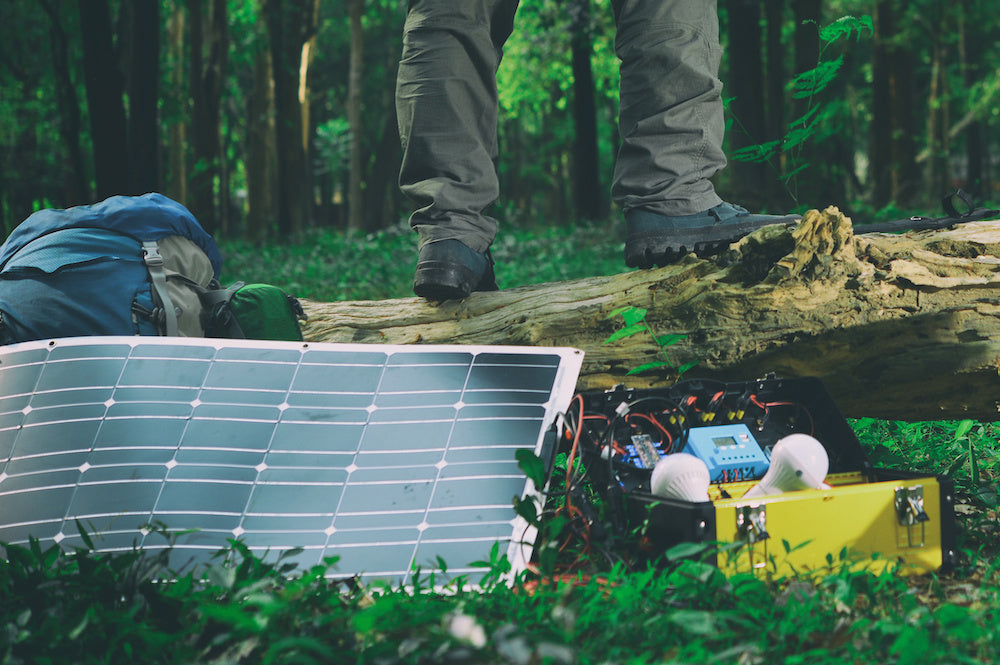
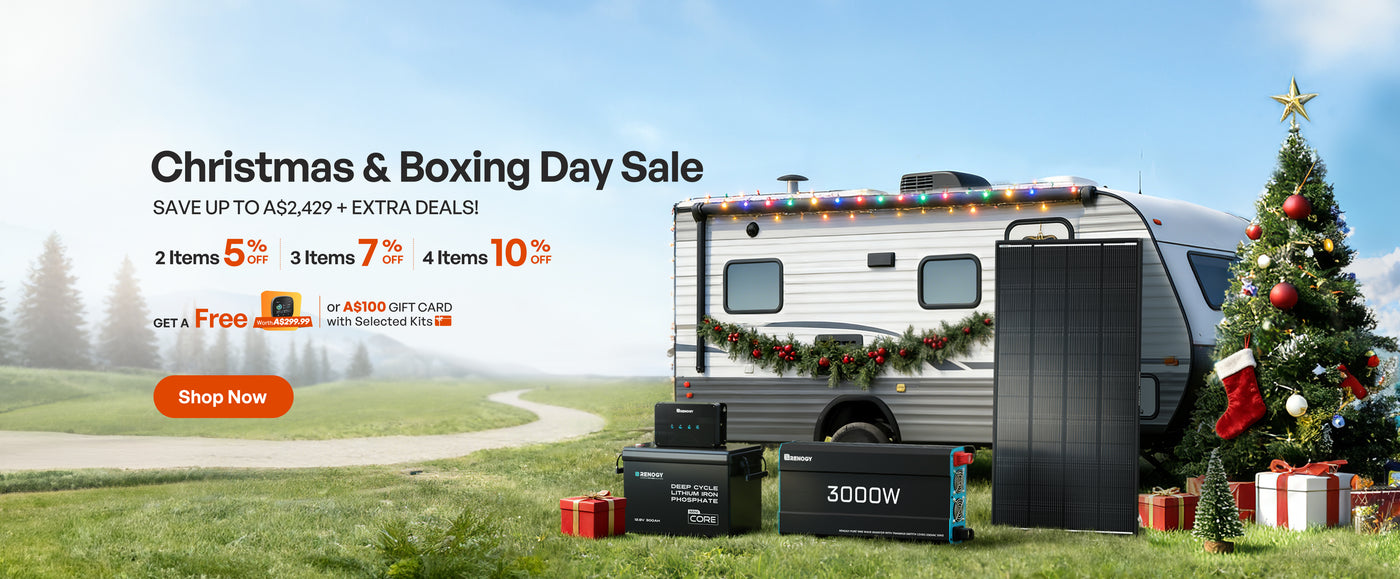


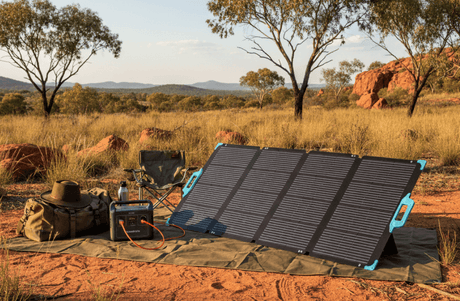
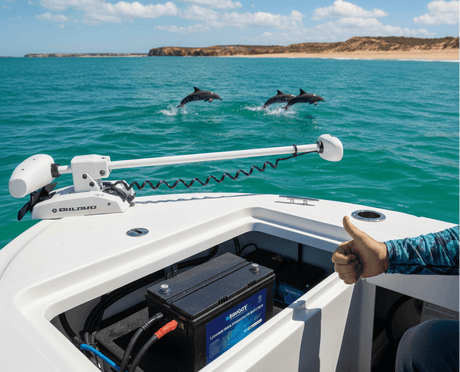
![What Is a DC to DC Battery Charger [Comprehensive Guide]](http://au.renogy.com/cdn/shop/articles/IMG_3829_bd86de74-31d6-49fd-b9d5-265bb723091d.jpg?v=1757582605&width=460)
